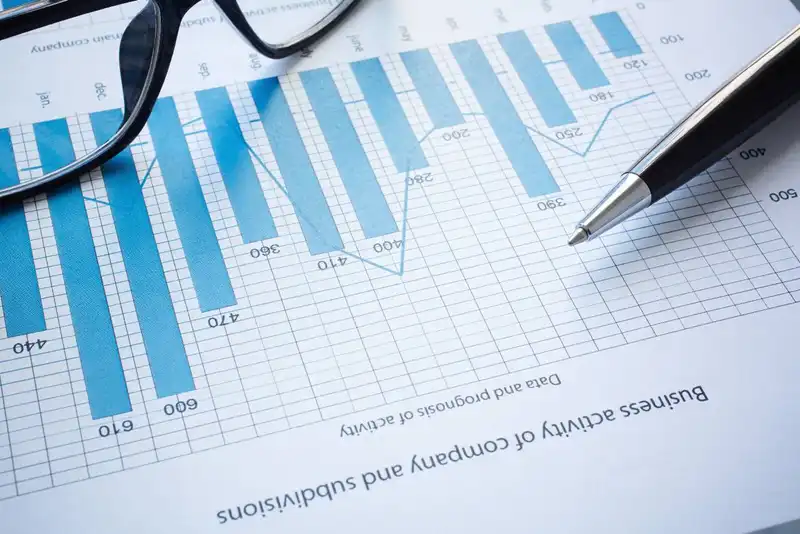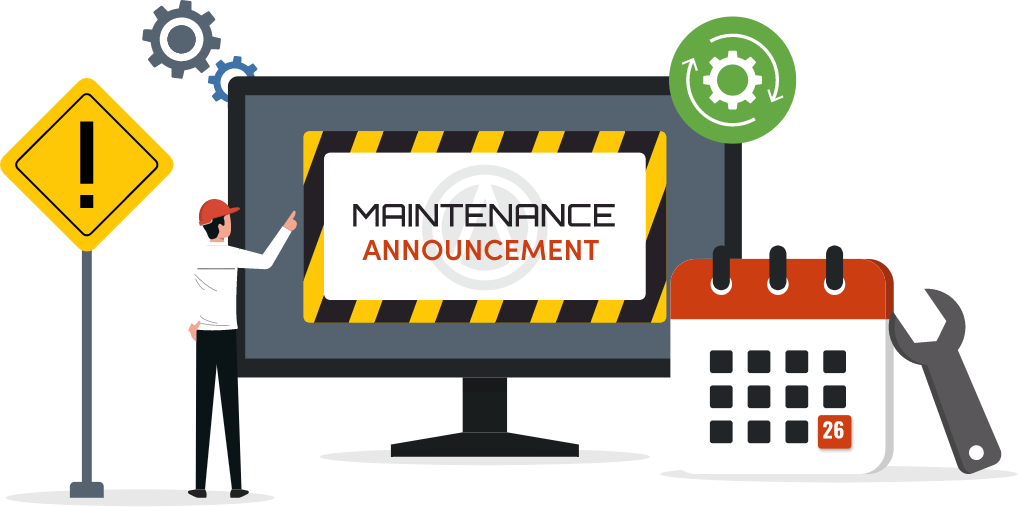What is profit and loss statement?
A profit and loss statement is a financial report that shows a restaurant's revenues, costs, and expenses over a specific period, helping owners understand profitability, track performance, and make informed business decisions.
How to Read and Understand a Restaurant Profit and Loss Statement
Brief Overview of Profit and Loss Statement
If you own a restaurant, you probably focus every day on keeping customers happy, managing staff, and making sure food quality stays high. But no matter how busy things get, you need to know whether your restaurant is actually making money. That's where the profit and loss statement - also called the P&L - comes in.
A P&L statement is a simple financial report that shows how much money your restaurant earns, how much it spends, and what's left over. It breaks everything down into sections like sales, food costs, labor, rent, and other expenses. By looking at it regularly, you can see where your money is going and figure out what's helping or hurting your bottom line.
Understanding your P&L is one of the most useful things you can do as an owner. It helps you answer questions like - Are food costs too high? Are we overstaffed? Are we really making a profit each month? You don't need to be a financial expert to understand it - you just need to know what to look for.
Understanding the Structure of a P&L Statement

Before you can get value from your P&L statement, it helps to understand how it's organized. Most restaurant profit and loss statements follow a similar structure, even if the numbers or categories vary slightly. Think of it like a story that explains how your money flows in and out of the business.
The top part usually starts with total sales or revenue - this includes all the money your restaurant brings in from food, drinks, takeout, and delivery. Below that, you'll see your cost of goods sold (COGS) - the amount you spend on food, beverages, and other ingredients. Subtracting COGS from revenue gives you your gross profit.
Next comes labor costs - this includes wages, salaries, and payroll taxes. After that, you'll see operating expenses, which cover rent, utilities, supplies, marketing, insurance, and more. When you subtract all these costs from your gross profit, you're left with your net profit or loss.
P&L statements can be created monthly, quarterly, or yearly. A monthly report is most useful for spotting issues early, while a yearly one helps with long-term planning. Knowing the layout of your P&L makes it easier to spot problems and take action before they grow.
The Smarter Choice for Maximizing Your Financial Potential
Streamline Your Restaurant's Finances with Altametrics!
Revenue
Revenue is the first section on your P&L statement - and it's where your financial story begins. This section shows all the money your restaurant brings in during a set period, usually broken down by category. These categories might include dine-in food sales, beverages, delivery or takeout orders, catering, and sometimes even merchandise or gift cards.
It's important to look at both gross sales and net sales. Gross sales is the total amount before any discounts, refunds, or comps. Net sales is what's left after those are taken out - and that's the number you should focus on most. It gives a more accurate picture of what your restaurant actually earned.
Tracking your revenue regularly can help you spot trends. For example, are sales higher on weekends? Is takeout becoming more popular than dine-in? Are certain menu items driving more sales? This kind of information helps you make smart choices about pricing, promotions, and menu planning.
Your revenue is the foundation of the entire P&L. If you're not bringing in enough money to cover your costs, everything else becomes a struggle. That's why it's so important to review this section closely and often.
Cost of Goods Sold (COGS)
The next important section of your P&L statement is Cost of Goods Sold (COGS). This refers to the total cost of the food, beverages, and other ingredients used to prepare your menu items during a specific period. In simple terms, COGS shows how much it costs you to create the food and drinks you sell.
For example, if you sell a burger for $12 and the meat, bun, toppings, and condiments cost you $4, then part of that $4 goes into your COGS. If you sell 100 burgers in a week, then $400 of your weekly revenue is tied to just that one item's COGS. The same goes for everything else you serve.
COGS is important because it directly affects your gross profit. The lower your COGS, the more profit you make on each sale. But cutting corners on quality isn't the answer - you want to keep costs under control while still serving great food.
To manage COGS effectively
1. Track inventory regularly - Over-ordering leads to waste, while under-ordering can disappoint customers.
2. Watch portion sizes - Even small inconsistencies in servings can cause big changes in food costs over time.
3. Negotiate with suppliers - Better prices or bulk deals can help lower your ingredient costs.
4. Analyze menu performance - Some dishes may be popular but expensive to make. Adjust pricing or ingredients if needed.
Most restaurants aim to keep their food and beverage COGS between 25% to 35% of total sales, depending on the concept. If your numbers are higher, it's worth taking a closer look at where you can make small adjustments.
Labor Costs

Labor is often one of the biggest costs in a restaurant, and it's a major section on your P&L statement. Labor costs include wages for your front-of-house staff (servers, hosts, bartenders) and back-of-house team (chefs, cooks, dishwashers), as well as management salaries. It also includes payroll taxes, benefits, and sometimes things like uniforms or training expenses.
Keeping labor costs under control is key to staying profitable - but it's also a delicate balance. You need enough staff to deliver great service and maintain kitchen speed, but over-staffing leads to wasted money and poor labor efficiency.
To understand labor costs on your P&L, look at both the total dollar amount and the labor cost percentage. Labor percentage is calculated by dividing total labor costs by total sales. For many restaurants, this falls between 25% to 35%, but it can vary based on your concept, pricing, and service style. For example, a quick-service restaurant might aim for a lower percentage than a full-service, fine dining establishment.
To manage labor costs more effectively
- Use scheduling tools to match staffing levels with foretasted sales.
- Cross-train employees so they can cover different roles when needed.
- Review overtime and avoid it unless absolutely necessary.
- Monitor productivity to ensure labor hours align with busy and slow periods.
Labor costs are often tied closely to sales, so tracking both together helps you make smarter decisions. If sales drop but labor hours stay the same, your profit will take a hit. That's why reviewing this part of your P&L regularly can help you adjust quickly.
Good labor management isn't about cutting corners - it's about being efficient and intentional. When you understand how labor affects your bottom line, you can build a schedule that supports your team and protects your profits.
Operating Expenses
Operating expenses are all the other costs your restaurant has to pay to keep running, outside of food and labor. These expenses cover a wide range of items, and understanding them is essential because they directly impact your net profit.
Some operating expenses stay the same every month, like rent or loan payments. These are called fixed costs. Whether you serve 100 customers or 500, you'll still owe the same rent each month. Other expenses, called variable costs, can change depending on your business activity. For example, utilities like electricity or water may go up if you're busy and running more equipment, or your marketing expenses might increase during special promotions.
Common operating expenses you'll see on a P&L include
- Rent or mortgage payments for your restaurant space
- Utilities like electricity, water, gas, and internet
- Insurance costs (property, liability, workers' comp)
- Marketing and advertising
- Supplies (cleaning products, paper goods, small kitchen tools)
- Repairs and maintenance
- Licenses and permits
- Credit card processing fees
- Professional fees (accounting, legal)
It's important to regularly review your operating expenses to find areas where you might be able to save money. For instance, switching to energy-efficient lighting or negotiating your insurance rates could lower costs without affecting your service quality. Tracking these expenses also helps you spot any unusual spikes, like a sudden increase in utility bills that might indicate a leak or faulty equipment.
Some operating costs are easier to control than others, but knowing exactly what you're spending and why helps you make smarter budgeting decisions. Remember, even small savings on operating expenses add up over time and improve your restaurant's profitability.
By keeping a close eye on both fixed and variable expenses through your P&L, you can maintain a healthier balance sheet and be better prepared for slower months or unexpected costs.
Net Profit
After you subtract all your costs and expenses from your total revenue, the final number on your profit and loss statement is the net profit - sometimes called the bottom line. This figure tells you how much money your restaurant actually made (or lost) during the period after paying for everything- food, labor, rent, utilities, and other expenses.
Net profit is the clearest measure of your restaurant's financial health. If your net profit is positive, your restaurant is making money. If it's negative, you're losing money and need to take action to improve.
Understanding your net profit margin is just as important as the dollar amount. The net profit margin is the percentage of your revenue that remains after all expenses. For example, if your restaurant earned $100,000 in revenue and your net profit was $10,000, your net profit margin is 10%. In the restaurant industry, net profit margins often range from 3% to 10%, depending on the type of restaurant, location, and business model. Fine dining places might have different margins compared to fast-casual spots.
A low net profit margin doesn't always mean trouble. Many restaurants reinvest profits back into the business to grow or improve operations. But if your net profit stays low or negative for a long time, it's a warning sign that costs may be too high or sales are too low.
To improve net profit, consider
- Increasing revenue through marketing or menu changes
- Lowering food or labor costs without sacrificing quality
- Cutting unnecessary operating expenses
- Reviewing your pricing strategy to ensure it covers all costs
Regularly reviewing your net profit and profit margin helps you track progress and make smarter decisions. It gives you a clear view of whether your restaurant is financially sustainable and what needs attention.
Remember, profit is what keeps your business alive. Knowing exactly how much you're taking home after expenses lets you plan for the future with confidence.
Turning Insights Into Action
Understanding your profit and loss statement is just the first step - the real value comes when you use that information to make smart decisions for your restaurant. Your P&L shows you where money is being made and lost, giving you a clear picture of what's working and what needs improvement.
Start by setting financial goals based on what you see. For example, if your food costs are higher than average, aim to reduce waste or negotiate better prices with suppliers. If labor costs seem high, review your scheduling to better match staff levels with busy times. Use trends in your revenue to plan marketing efforts during slower months or introduce popular menu items that boost sales.
It's also important to track your P&L regularly - monthly is ideal - so you can catch problems early and adjust quickly. Waiting too long to review your numbers might mean missed opportunities or growing losses.
Use your P&L data to make informed decisions about pricing, staffing, menu changes, and expenses. For instance, if you notice a certain dish has high costs but low sales, it might be time to tweak the recipe, raise the price, or remove it altogether.
Finally, don't be afraid to ask for help. Whether it's an accountant, a restaurant consultant, or a trusted team member, having someone who understands the numbers can offer valuable insights.
By turning the information from your profit and loss statement into action, you can improve your restaurant's financial health, increase profits, and build a stronger business for the future.
Ready to take your financial operations to the next level?
Altametrics offers powerful accounting tools designed for businesses in hospitality. From tracking expenses to automating billing, their easy-to-use platform helps you manage everything in one place.
Explore Altametrics Restaurant Accounting today by clicking "Schedule a Demo" below and see how you can simplify your processes and focus more on what matters - running your hotel.
Take Your Restaurant to the Next Level
Let Altametrics Simplify Your Restaurant's Finances
Must-Read Content

How to Set Up Your Restaurant's Accounting System for Maximum Efficiency

5 Must-Have Features to Look for in Restaurant Accounting Software


The Complete Guide to Receipts and Invoice Management for Hotels










